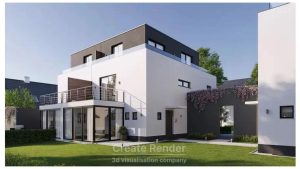3D visualization has become indispensable in various industries, offering a transformative way to communicate ideas and concepts. From architecture to product design, it enhances our ability to convey complex information. However, the key to harnessing its potential lies in choosing the right service provider. The importance of this choice cannot be overstated, as it directly impacts the quality and effectiveness of your visualizations. In this guide, we will delve into the critical factors that help you make an informed decision when selecting a 3D visualization service provider.
The Crucial Aspect: Understanding your specific needs is the cornerstone of a successful partnership with a 3D visualization service provider. Are you looking to create stunning visualizations for marketing purposes, or do you require detailed technical renderings? Clarifying your objectives will not only guide your provider selection but also ensure that the final deliverables align with your goals.
 How to choose a 3D visualization service provider
How to choose a 3D visualization service provider
In your quest to find the ideal 3D visualization service provider, don’t underestimate the significance of their industry experience. In this list, we will delve into the critical factors that help you make an informed decision when selecting a 3D rendering service provider.
- Experience matters. Experience in architectural visualization is an important success factor. Suppliers with successful projects are more likely to understand the nuances of your industry and deliver high-quality results.
- Customized Solutions. Contractors who are well-versed in your industry can provide tailored solutions for addressing the challenges of creating intricate designs. They are fluent in industry terminology, have developed specialized templates, and comprehend your specific requirements.
- Seek Recommendations. If you have any doubts, feel free to ask rendering specialists for references from previous clients. Engaging in a direct conversation with these references can provide you with a deeper understanding of the service provider’s capabilities.
- Portfolio Assessment. When assessing potential providers, make it a priority to review their portfolios. A strong portfolio highlights the scope and quality of their past work. Seek out projects that align with your needs to better assess their capabilities
- Cross-Reference. If possible, cross-reference reviews and testimonials with other information about the provider, such as their portfolio and industry experience.
- Assessing Reputation. Customer reviews offer valuable insights into the reputation of the 3D rendering company you are considering. Reading reviews can help gauge customer satisfaction, with positive reviews often indicating a reliable service and negative reviews serving as potential red flags.
- Engagement. Check if the provider responds to reviews. A provider who actively engages with clients’ feedback, whether positive or negative, demonstrates professionalism and commitment to client satisfaction.
How much does 3D architectural rendering cost?
Price Range. Anticipate costs ranging from $200 to $2,000 when engaging freelance 3D visualization services or smaller firms. This range can be further segmented based on the project’s scope or scale.
| Category of 3D Rendering Service | Initial Service Price | Turnaround Time |
| 3D Floor plans | $50 – $350 | 4- 7 days |
| 3D Exteriors | $449 each | 2 weeks |
| 3D Interiors | $259 each | 5 days |
| 3D Animations | $1500/minute | 2 weeks |
*the exact price depends on some factors, you need to check with a specialist
In summary, reviewing client feedback and testimonials is a crucial step in assessing a 3D visualization service provider’s reputation and capabilities. By following these guidelines, you can better navigate the feedback landscape and make informed decisions based on genuine client experiences.

